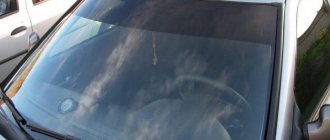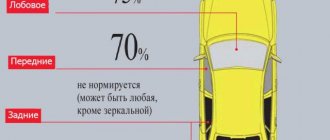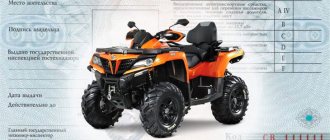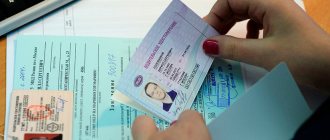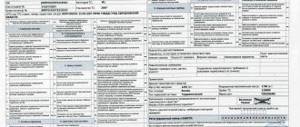Passing a technical inspection is a mandatory procedure for all cars older than three years. Subject to contamination, temperature changes, and mechanical stress, glass tends to become covered with growing cracks and chips, making it difficult to see the roadway. Therefore, the technical inspection may be rejected until the windshield is completely or partially replaced or repaired. More information about technical inspection with a crack on the windshield in 2021 is discussed in this post.
Technical inspection 2021. Everything's under control
Now only authorized services will be able to carry out technical inspections, and the issued diagnostic cards will be registered in a special EAISTO system developed by the Ministry of Internal Affairs. The program will include photographs of the car signed with an enhanced digital signature, and the inspection will be carried out under online control. Photos will be taken so that the license plate and make of the car are clearly visible. All information will be saved for subsequent checks. Therefore, it will not be possible to “agree”.
If damage is found on the windshield that does not comply with GOST standards, the car will not pass the procedure. Therefore, before receiving a diagnostic card and applying for insurance, you need to assess the condition of the car, including windshields, and, if necessary, repair the car in advance.
Danger of cracks
Serious defects in the windshield can lead to damage to its integrity. This is especially dangerous while driving. Even with the slightest crack, auto glass can burst due to mechanical impact (pebbles, strong gust of wind, snow).
The fact is that a redistribution of material stress occurs in a damaged windshield. With the slightest increase in load, the split parts will fly into the cabin. This is also possible during emergency braking or an accident. All this can lead to quite serious injuries.
How to pass inspection with various windshield damage
Not all windshields are in perfect condition. They often have cracks, scratches, chips and other defects. Owners have a reasonable question - now that the requirements for technical inspection are becoming more stringent, what kind of damage will prevent them from passing the technical inspection in order to obtain insurance.
To understand what damage will cause problems with passing a technical inspection, you need to refer to the following documents:
- GOST 111-2001 for glass, which regulates, among other things, the glazing of vehicles.
- GOST 5727-88, which specifies the general safety requirements for glass for land transport.
- GOST 33997-2016, which lists the requirements for the operation of wheeled vehicles.
It is these documents that the employees conducting the technical inspection are guided by.
The necessary information is also contained in Part 1 of Art. 12.5 and part 6 of Art. 12.31.1 Code of Administrative Offenses of the Russian Federation. It specifies the penalties that will occur if the car owner with damage to the glass continues to operate the car, and even more so, transports passengers and cargo.
GOST R 51709-2001 on vehicle safety, which is referenced on many websites, has become invalid as of February 1, 2021. This happened due to the approval by Rosstandart of the new GOST 33997-2016 and the adoption of the Customs Union regulations TR CU 018/2011. Therefore, the data from GOST R 51709-2001 are outdated and cannot be relied upon.
First, let's turn to GOST 111-2001, which indicates the types of mechanical damage to car windows:
- Scratches are non-through damage in the form of a line, which can be linear or blurry.
- Cracks are through defects. Sometimes, due to mechanical stress, several cracks form in the glass in the form of a “web”.
- Broken corners are a violation of the integrity of the edge of the glass with part of it breaking off.
- Protrusions on the end surface. In cars they are covered with decorative elements, so they are not visible.
- Abrasions are defects in the form of a stripe that reduces the transparency of the glass.
- Chips are non-through defects of various shapes - “star”, “bull’s eye”, “crescent”.
- Notches are defects that do not pass through the entire thickness of the glass and have limited dimensions.
Now let's turn to the requirements of clause 4.4.7 of GOST 33997-2016, which replaced GOST R 51709-2001. It states that the operation of vehicles with cracks in the windshield in the area of the wiper on the driver's side is prohibited. That is, a through defect located in the driver’s field of vision is considered an obstacle to passing technical inspection and operating the vehicle.
GOST 33997-2016 does not contain any data on the influence of the size, shape or other features of a crack on the permit for operation. Therefore, even a small through defect in the area of operation of the “driver’s” wipers will put an end to passing the technical inspection. And a car with several “cobweb” cracks, especially on the glass opposite the driver, will not be allowed to operate.
A car whose glass has numerous minor, non-through damages on the driver’s side will also not pass inspection. In this case, clause 4.4.2 of GOST 33997-2016 will work, which does not allow the operation of the car when the visibility of the driver’s seat is limited. The same will happen if the crack is located outside the wiper operating area, but at the same time interferes with visibility.
Scuffs reduce the light transmittance of the glass below the norm specified in clause 7.3. Traffic rules (currently it is 75%, but within a year the figure should be reduced to 70%). Therefore, the car is declared unfit for use and it will not be possible to insure it. It will be possible to pass inspection only if there are minor abrasions along the edges of the glass surface outside the wiper operating area.
Car owners often have questions about the possibility of passing a vehicle inspection with a crack located between the driver and passenger side of the glass. The answer to this is provided by court decision No. 12-855/2018 of the Vologda Court, where a car with such damage was declared unfit for use. The car will not pass the inspection procedure.
With defects on the passenger side the situation is simpler. A car will not pass inspection only if damage to the glass reduces its light transmittance below normal, makes the operation of the car dangerous or interferes with visibility.
If there is a small crack at the bottom of the windshield, you can pass the inspection. Clause 4.4.7 of GOST 33997-2016 indicates that such damage is unacceptable only in the area where the windshield wipers operate. The diagram of regulatory zones included in GOST 5727-88 shows that the lower part of the glass adjacent to the hood is not included in it.
The same can be said about cracks located at the very top of the glass or on the side near the racks. They also will not interfere with the technical inspection, since they are not included in the operating area of the windshield wipers. According to clause 2.2.6 5727-88, the “free” zone is 25 mm from the edge of the windshield and 35 mm from the dividing pillars.
However, if there is a large, deep, penetrating defect, even located outside the coverage area of the wipers, the car is unlikely to pass inspection. Such a car is dangerous during operation, and the task of specialists is to identify vehicles that pose a danger to road users. It will not be possible to obtain a diagnostic card and insure the car.
You can pass a technical inspection with chips, since the term “chip” is not in GOST 33997-2016. These defects, especially “fresh” ones, can be easily removed during glass repair, and the technical service department treats them with loyalty. A car with an unfixed large chip, especially on the driver’s side, will not pass the procedure, since the defect obscures the view.
What to do if the MOT was not passed due to a crack or chip?
The easiest option is to buy a new windshield and replace it yourself or at the nearest service center. However, this part is not so cheap, so not all drivers are happy with this method. But there is a way out. Today, many technologies have been developed that allow you to quickly and inexpensively get rid of small cracks and other damage to glass.
You can repair a crack or chip yourself by purchasing the necessary materials. But such an initiative will not always be successful, while car repair specialists will do everything quickly and with a guarantee. In most cases, windshield repair takes no more than 40-60 minutes.
What work do specialists do to correct facial defects?
- Thoroughly clean all glass, especially cracks, from dirt, dust and other foreign substances;
- Treatment with special means of any beam emerging from the main impact zone or fragment;
- Glass polymerization (filling chips with special polymers);
- Sealing of chips and cracks and their subsequent treatment with ultraviolet rays;
- Final glass polishing and removal of excess resin.
In most cases, after this treatment, the glass will look almost like new. In any case, with such prepared glass it will be much easier to inspect the car.
But it’s even better to avoid cracks and chips altogether. To do this, it is often necessary to take only the most important precautions. For example, avoid driving near the wheels of large trucks, clean and check windshield wipers regularly, and do not park in areas with heavy traffic.
How to pass inspection of a car with stickers on the windshield
According to 4.4.3 GOST 33997-2016, a light-protective strip made of colored film is allowed in the upper part of the glass. Its width for passenger cars is 140 mm. In buses, minibuses and other vehicles for transporting passengers and goods, it extends to the upper area of the windshield wipers.
The light transmittance of this area is not measured, so you can stick a decorative strip there and the car will pass inspection without any problems.
Stickers on other parts of the windshields, especially in the area of the windshield wipers, will not allow you to obtain a diagnostic card and obtain insurance. This prohibits clause 4.4.2 of GOST 33997-2016, according to which only radio antennas and windshield heating elements can be placed in this area. Nothing else can obscure it.
What features of glass will not allow you to pass inspection?
The presence of chips is not the only problem that a driver may encounter that does not allow him to receive a document confirming the successful completion of a technical inspection. Therefore, drivers who do not know whether they can pass inspection with a cracked windshield should pay attention to other features.
These include:
- Coating glass with mirror film
- Low light transmission coloring
- presence of stickers, drawings or other objects on the windshield that interfere with visibility
Attention! Additionally, vehicles with a cracked or missing windshield will not be inspected. In such cases, preliminary repairs are required.
Is it possible to pass a technical inspection with a damaged windshield without replacing it?
It all depends on the type of defect and the location where it is located. Repaired chips, scratches and other minor defects will not be a problem for passing inspection. Cracks located outside the “driver's area” can also be repaired.
In other cases, it is better to replace it. There are no documents regulating the passage of technical inspection for a car that has obvious signs of repairing cracks on the windshield. Therefore, everything will depend on the specialist’s vigilance, his loyalty and the excellence of his work.
Such an undertaking is risky and impractical. It is much simpler and easier to replace the glass and know for sure that the car will pass inspection than to try to repair the damage and take a risk. Taking an unsuccessful risk can result in loss of money and time. Repair is not always able to keep the crack within the old boundaries - it often spreads, and it is not possible to repair it again.
Sometimes a car owner who decides to repair a windshield passes inspection once, but not the next time. It is useless to go to court in this situation, since in the absence of regulations allowing the windshield to be repaired and regulating such a process, the court will not take the side of the car owner. Therefore, it is easier to have your car repaired at a glass center to avoid problems with passing technical inspection and subsequent operation.
Basic information about maintenance
A technical inspection is one of the types of checks necessary to check the technical condition of a car and identify defects that impede safe driving. The procedure involves evaluating major structural components, including the engine, brake, exhaust and steering systems, lighting and auxiliary equipment.
The fact of passage is reflected in your insurance policy. All vehicle owners are required to undergo a technical inspection. The frequency of checks depends on the characteristics of the car, its make, age, mileage and other factors.
If the car is more than 3 years old, it must undergo technical inspection. If the vehicle is less than 3 years old, it does not need to be inspected.
What to do if glass damage appears after passing a technical inspection and taking out insurance?
In this case, the element must be replaced without waiting for the next technical inspection. The operation of such a vehicle violates paragraphs. 1 and 2 of Article 16 of Law No. 196-FZ of December 10, 1995, which specifies traffic safety requirements.
The traffic police inspector has the right to stop the driver and issue a report. Penalties in accordance with Part 1 of Art. 12.5 of the Administrative Code are small and amount to only 500 rubles. An order is issued to replace the glass, and if this is not done, the fine will increase to 1000 rubles. The fine will continue until the owner replaces the damaged part of the car.
An attempt to challenge the situation in court will not yield results. Judicial practice shows that the courts fully support the actions of traffic police officers. The courts refer to Post No. 1090 of October 23, 1993, which prohibits the operation of faulty vehicles.
It is especially important to promptly repair vehicles used to transport passengers or goods. Otherwise, except paragraphs. 1-2 Article 16 of Law No. 196-FZ dated 10.12. 95, the order of the Ministry of Transport No. 7 of January 15, 2014 is violated. Driving a car with a broken glass, if the car is used to transport passengers and goods, is subject to fines under Part 6 of Art. 12.31.1 Code of Administrative Offenses of the Russian Federation. The driver will be fined 1500, the owner, individual entrepreneur and legal entity. person in the amount of up to 10,000 rubles.
In addition to the legal consequences and the need to undergo a technical inspection, you need to remember about your own safety. It is dangerous to operate a car with a damaged windshield, and such a car looks unpresentable. Replacing the glass will eliminate problems with passing technical inspection, complaints from traffic police officers and return the car to its attractiveness.
Is there a duty to maintain car windows in 2021?
Yes. And this is legally enshrined in a rather complex sequence. Yes, this is not just a matter of traffic regulations, although this is where you will find a direct requirement to ensure that the vehicle is in good condition. But there are still more important legal acts - federal laws. Let's take a look at this sequence.
- Article 17 of the Federal Law on Road Safety requires that vehicles be in good condition when operating on Russian roads. Moreover, paragraph 2 of this norm indicates that the responsibility for monitoring the technical condition lies with the owners of the car.
- At the same time, paragraph 11 of the Basic Provisions as an Appendix to the Traffic Regulations states that it is prohibited to drive cars that have faults and/or conditions listed in a special List.
- Meanwhile, in the List you will not find a separate section on glass - they are listed separately in some sections.
- And in the Administrative Code of 2021 there is a special article 12.5, which contains penalties: fines, confiscation in some cases and deprivation of rights for violation of the Basic Provisions.
- In addition, the safety requirement, as well as methods for checking it, are contained in GOST 33997-2016, which, among other things, regulates the operation of car windows.
- There is also a Technical Regulation on the safety of wheeled vehicles. He lists the requirements for vehicle components to ensure the same safety on the roads of the Russian Federation.
But don't be intimidated by so many regulations. In fact, everything is much simpler, and below we will explain the size of the traffic police fine for certain malfunctions of the windshield and side windows.
But, looking ahead, let us point out that there is also bad news here. The penalties for a broken, cracked, burst, or otherwise damaged windshield in 2021 vary between legal theory and law enforcement practice. Alas, judicial practice interprets laws not entirely in favor of drivers.
You will also be interested in:
- We drove under the camera at a yellow traffic light: will there be a fine and how to appeal?
- What is the fine for a “Brick” sign at a gas station, how to avoid it and cancel it?
- Is it possible to install eyelashes and DRLs on headlights according to traffic regulations and what is the fine for this?

